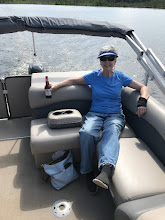We start ascending elevation and the topography abruptly changes. We enter that mountain range we had been viewing of the pinnacles all day, as the road traverses rougher terrain and then drops to enter a canyon and eventually, the sandy wash. Yes, the wash becomes the road, only still plowed, but with a thick sandy bottom and very little gravel it becomes like a motocross trial for the large, heavy Dodge to stay on top. We wallow side to side in 4 wheel drive; Marc over-steering to make corrections in the sand and me gawking at the increasingly interesting scenery around us. When it’s not gully-washing sand, it is washboard enough to rattle our teeth and beat us up. I even drop off my seatbelt because I can no longer take the chafing on my shoulder and chest. Didn’t we just get through marveling at what a good 4 wheel drive vehicle the Dodge made? Revise that for Arizona desert driving please: good on rocky hillsides; not so good in sandy washes! We pull over to take pictures. Wow, what a colorful venue we have entered! I feel a little as though I am back in Utah.





Farther along we come to a razor-wired fenced hillside; the fencing continuing high above us alongside the road for a time until we note a wide spot and some old buildings. We pull over to investigate and see there is a small pioneer cemetery in the distance with a very faded sign and a plaque explaining that this area was originally an old gold mining claim, eventually being worked by over 700 miners with an attendant settlement called El Rio in the late 1800’s. The mine has since changed hands many times, now being leased by a firm who is supposedly actively working it, but we saw very little evidence of that, with closed and locked gates, weedy driveways and little-maintained buildings. However, in the 1800’s they removed over $15,000,000 worth of gold (in 1880’s) dollars from these hills. Hum: maybe we should come back with our metal detectors we’re thinking….



A few more twists and turns and gunning the truck through the quicksand and we arrive at the pay kiosk for Picacho State recreation area, a California park. We take time to talk to the ranger and see if there are any maps available but only receive the typical paper pamphlet handed to all registrants of the campground. Since the ranger inquires if we have paid our entrance fee (“You’re not allowed to drive around in here without paying the day use fee”), we quickly thank her, dive out of the truck for some hasty shots of the boat launch and beautiful Colorado River and take our leave. After all; we’ll be able to eventually see all of this area we want via the boat by launching downstream. Nineteen or twenty dust-ridden miles later we are back in Yuma, headed home to inspect the damage to the tire. Yup—that one is history—with a rock slash two inches in length, there will be no patching this new tire.



What we learned: next time we definitely need to have the official BLM maps with all designated routes for any area we are going to explore. We need to be more cognizant of weather conditions—the Ranger outright told us we were foolish to be fooling around in this area this time of year by ourselves (meaning only one vehicle). As we were speaking, she indicated they had three lost people they were searching for right then and that rescue is by helicopter and more expensive than you want to know.
Once you are out in it, you see how truly vast and empty an area it becomes. And the roads don’t appear as rough in pictures and from a distance as they are when being traversed--full of sharp rocks, sudden wash-outs, drop-offs, and hairpin turns at the top of steep hillsides. We need to carry at least two spare tires and probably also carry more food for an emergency. She added that 5 gallons of water is the minimum, which we had with us. It would be great to have a GPS but we don’t have one and this is not the time to be purchasing one. After all, we’ll spend all that now having to buy at least two new tires for the Dodge. When you run duals, the tires have to match for the four wheel drive to work properly. So we had another adventure (for our pocketbook) and a real learning experience! Did this deter us? No, not in the least. Stay tuned for more desert doings with the Duskes!
